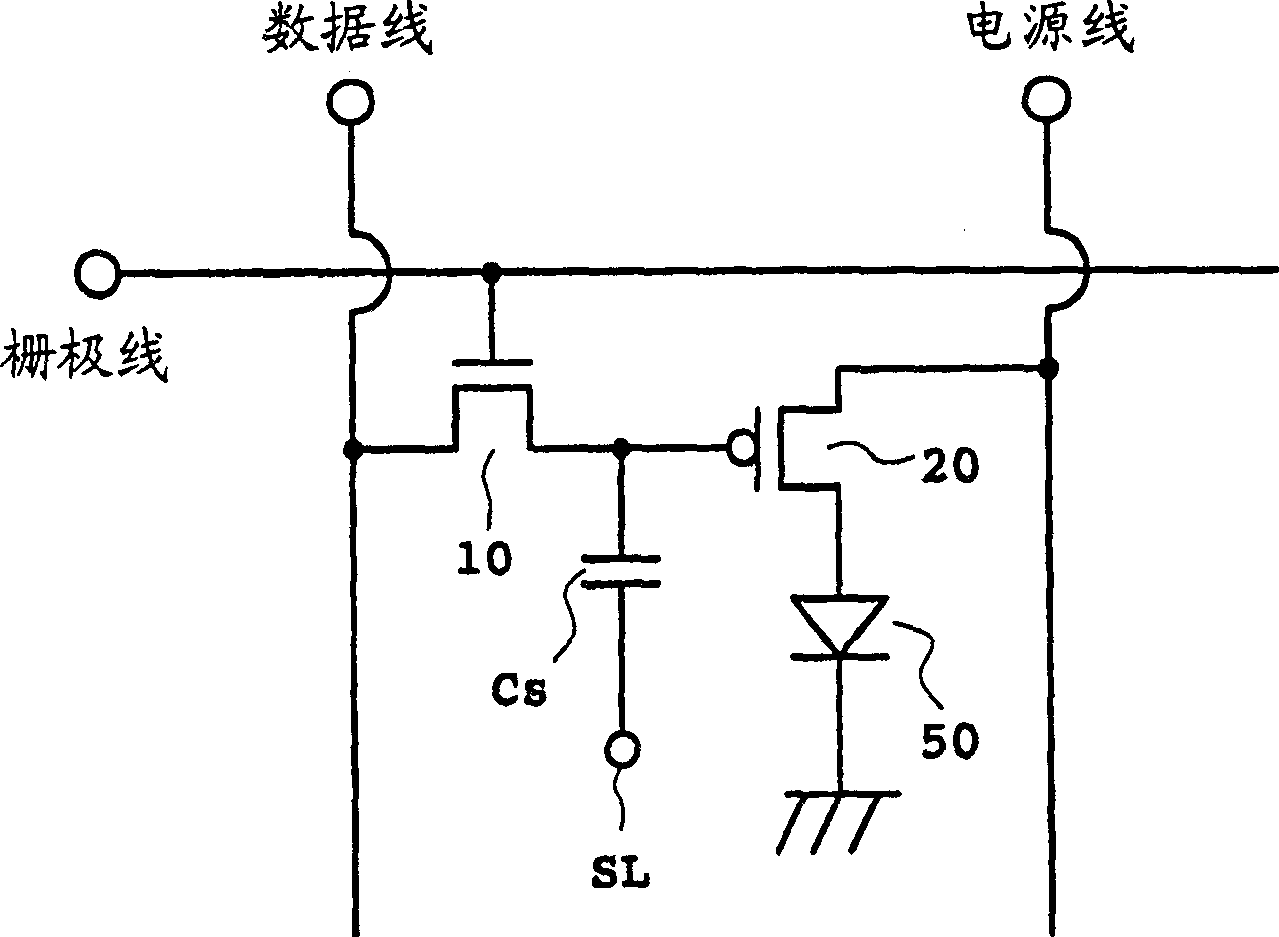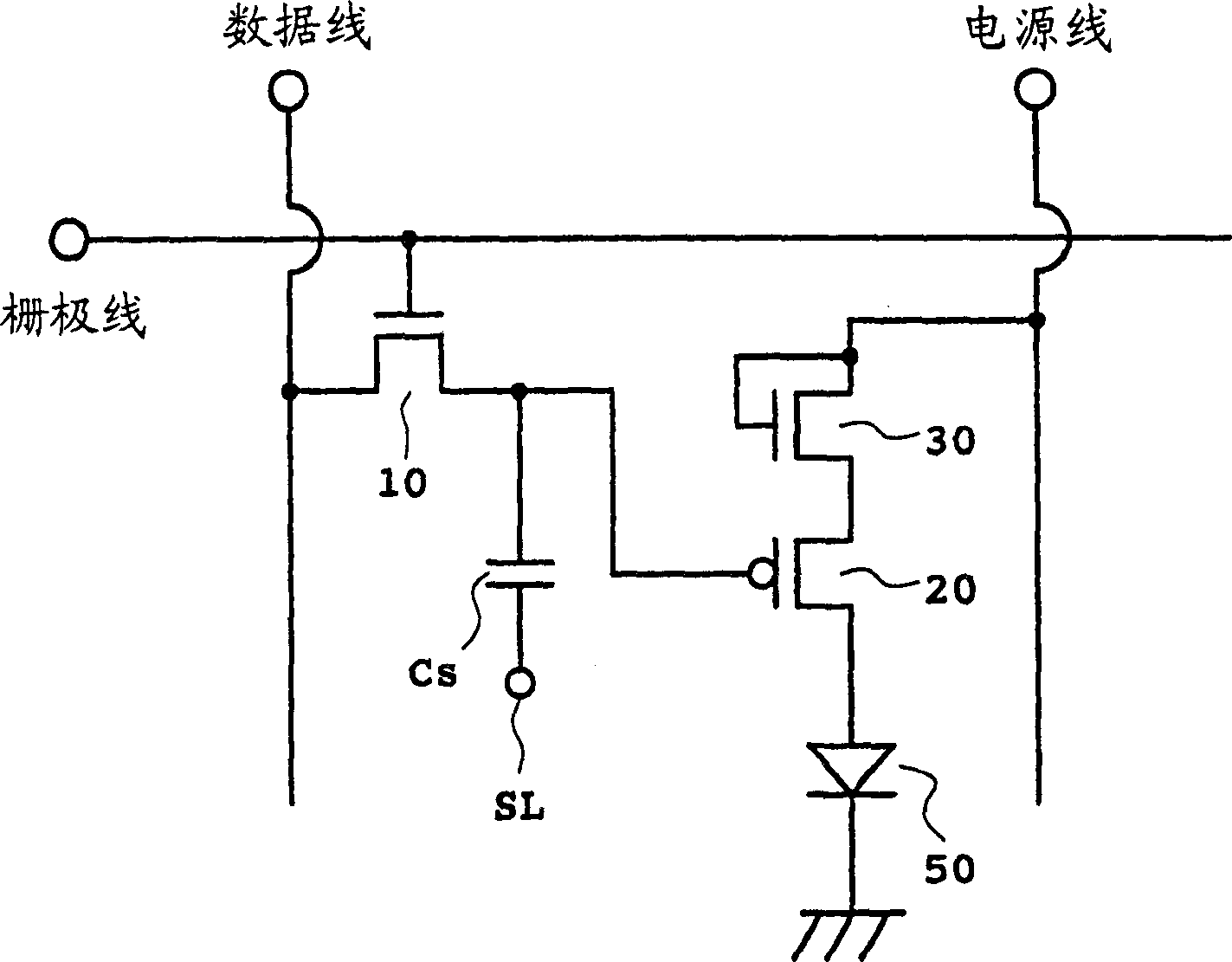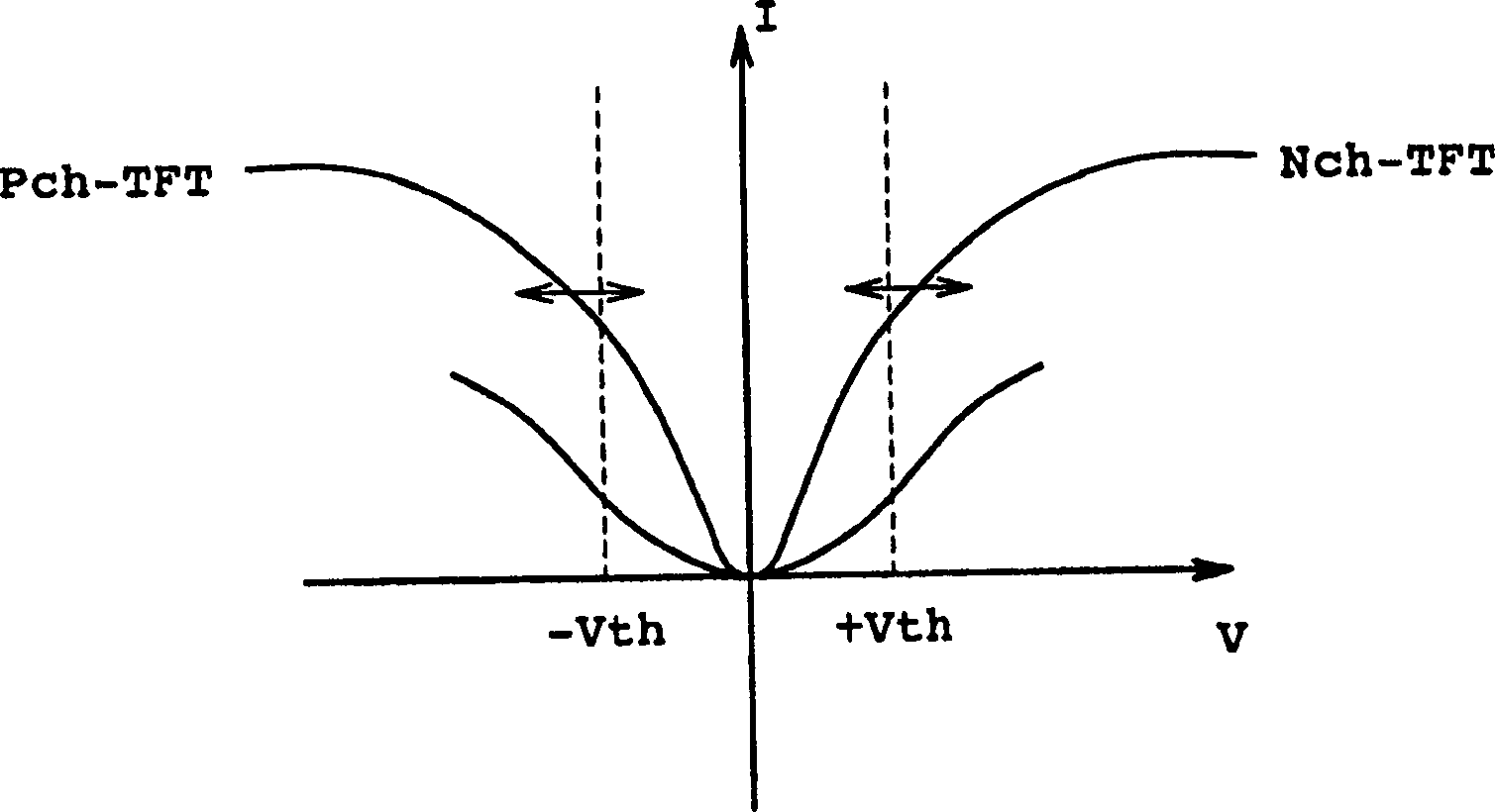Semiconductor device and display device
A technology for display devices and semiconductors, applied in the field of transistors in circuits, can solve problems such as dispersion of TFT conduction current characteristics, uneven particle size of polycrystalline silicon, etc., and achieve the effect of improving reliability
- Summary
- Abstract
- Description
- Claims
- Application Information
AI Technical Summary
Problems solved by technology
Method used
Image
Examples
Embodiment 1
[0060] figure 2 The circuit structure of each pixel in the m-rows-n-columns active matrix type EL display device of Embodiment 1 of the present invention is shown. As shown in the figure, each pixel includes an organic EL element 50, a switching TFT (first TFT) 10, an element driving TFT (second TFT) 20, and a storage capacitor Cs. GL and the area surrounded by the data lines DL extending in the column direction. In this embodiment, a compensating TFT 30 having a conductivity characteristic opposite to that of the second TFT 20 is inserted between the power supply line VL and the second TFT 20 . The gate of the TFT 30 for compensation is connected to one of the source and the drain to form a diode, and the diode is connected in a forward direction between the power supply line VL and the second TFT 20 . Accordingly, it is possible to operate without supplying a special control signal.
[0061] The gate of the first TFT 10 receives a gate signal and is turned on. Thus, the ...
Embodiment 2
[0110] Next, another embodiment 2 of the present invention will be described. In Example 1, in order to prevent dispersion of light emission luminance between pixels due to dispersion of transistor characteristics, a thin film transistor for compensating which has an opposite conduction characteristic to that of the thin film transistor for driving an element is provided. On the other hand, in the second embodiment, attention is paid to the arrangement of the element-driving thin film transistors (second TFTs) to suppress the dispersion of light emission luminance among pixels. FIG. 10 shows a configuration example of each pixel in Embodiment 2, FIG. 10( a ) is a schematic plan view, and FIG. 10( b ) is a cross-sectional view along line B-B of FIG. 10( a ). The structure starts with figure 1 The same circuit configuration is shown. In addition, in the figure, the same code|symbol is attached|subjected to the part corresponding to the figure already demonstrated.
[0111] In...
Embodiment 3
[0128] Next, as a third embodiment, a more efficient connection method of a plurality of second TFTs 20 and corresponding organic EL elements 50 in one pixel will be described. As above-mentioned embodiment 1 and embodiment 2 Figure 11 As shown in , it is preferable to provide a plurality of second TFTs 20 between the organic EL element 50 and the power supply line VL in one pixel from the viewpoint of improving reliability and improving characteristics. In the case of setting a plurality of 2nd TFTs 20 in one pixel, as Figure 11 As shown, by connecting the second TFTs 20 a and 20 b to the organic EL element 50 , the current supply from the power line VL to the organic EL element 50 through the second TFT 20 is more reliable. However, in the case of an organic EL element of the type that emits light from the light emitting layer 55 to the outside through the substrate 1 below from the transparent anode 52 as shown in FIG. For example, in Figure 9 (c) or in FIG. 10( b), t...
PUM
 Login to View More
Login to View More Abstract
Description
Claims
Application Information
 Login to View More
Login to View More - R&D
- Intellectual Property
- Life Sciences
- Materials
- Tech Scout
- Unparalleled Data Quality
- Higher Quality Content
- 60% Fewer Hallucinations
Browse by: Latest US Patents, China's latest patents, Technical Efficacy Thesaurus, Application Domain, Technology Topic, Popular Technical Reports.
© 2025 PatSnap. All rights reserved.Legal|Privacy policy|Modern Slavery Act Transparency Statement|Sitemap|About US| Contact US: help@patsnap.com



